Surfing in Noosa
Surfing guide to Noosa, Sunshine Coast, Queensland, Australia
Noosa has 6 surf spots and 1 surf holidays. Go explore!
Overview of surfing in Noosa
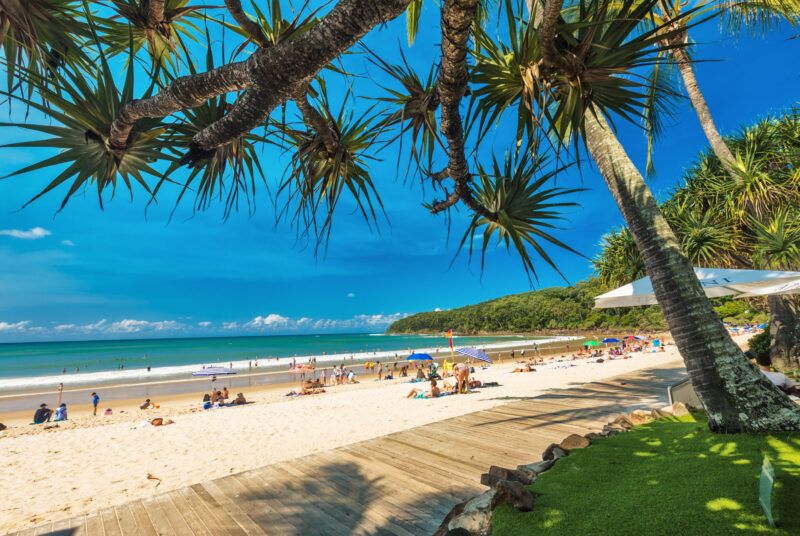
Noosa, on Queensland’s Sunshine Coast, is one of the most iconic surf towns in the world. Known for its world-class right-hand points, laid-back surf culture, and stunning natural beauty, Noosa is a true gem for surfers of all levels. The town sits inside the Noosa Biosphere Reserve, where lush national park headlands meet golden beaches and turquoise water. Few places combine waves, scenery, and lifestyle quite like Noosa.
Surfing here is all about style, flow, and length of ride. Noosa’s point breaks—Tea Tree Bay, Granite Bay, National Park, and First Point—are famous for their long, peeling right-handers that run for hundreds of metres. Longboarders in particular consider Noosa a holy site, with some of the best logging waves on the planet. At the same time, the breaks suit shortboarders, fish-riders, and fun-shapers who want time on the face to carve, cruise, or even tuck into the occasional barrel.
Beyond the waves, Noosa is a cultural hotspot. The town is packed with boutique shops, organic cafés, surf festivals, and eco-friendly accommodation. The annual Noosa Festival of Surfing, the biggest longboard event in the world, attracts riders from across the globe. Combine this with year-round warm weather, a friendly community, and a vibrant arts and food scene, and you get a surf destination that is as much about lifestyle as it is about waves.
Surf Regions in Noosa

First Point
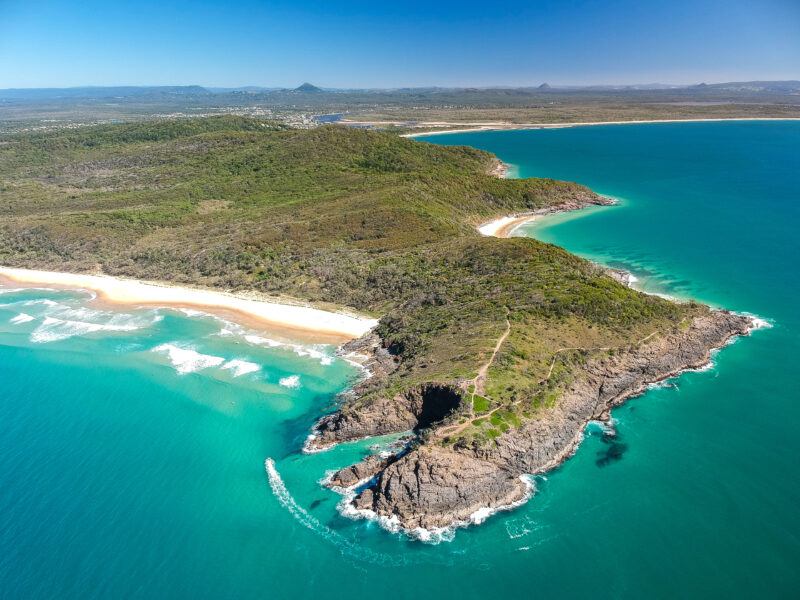
National Park Point
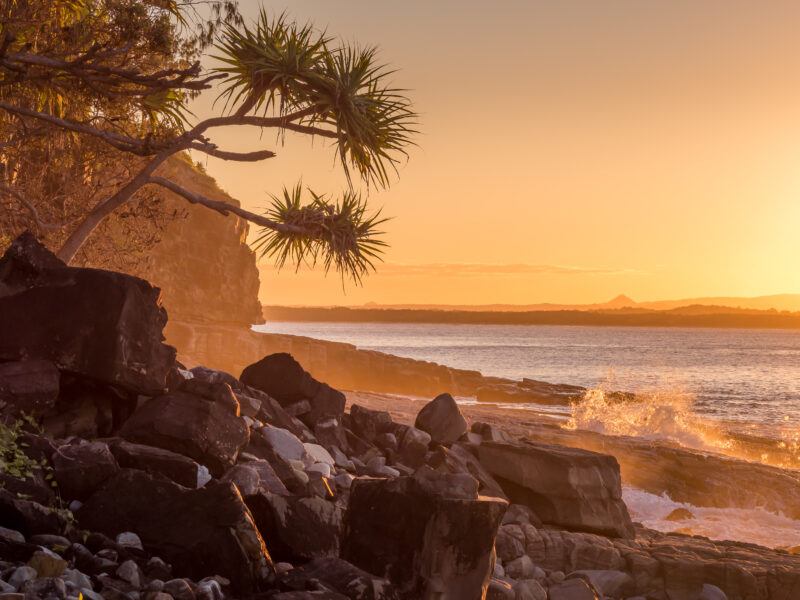
Tucked inside the Noosa National Park, this wave offers longer, more powerful rides than First Point. It’s popular with both longboarders and shortboarders, delivering clean rights that wrap around the headland. The walk through the national park to reach it adds a magical vibe.
Tea Tree Bay
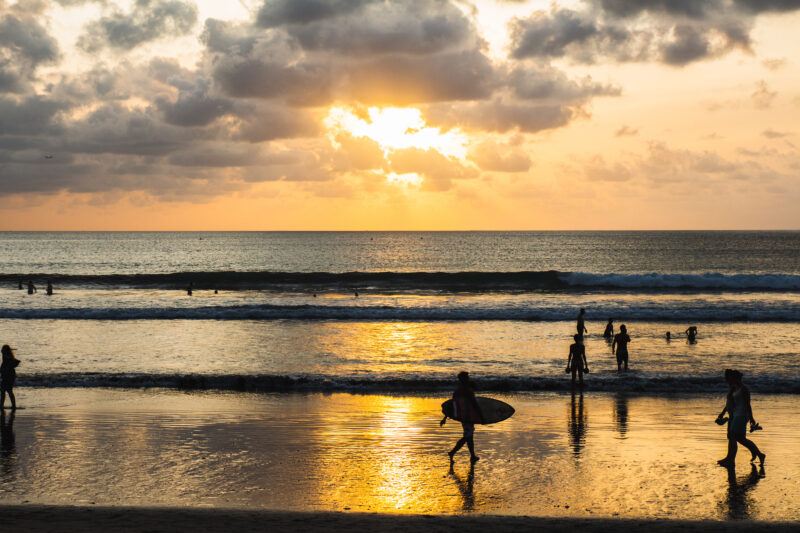
Further into the national park, Tea Tree Bay is one of Noosa’s most consistent and beloved surf spots. It offers long, lined-up rights with multiple sections, perfect for logging but also rippable enough for performance boards. The lineup is more relaxed compared to town breaks, though it still gets busy during swell.
Granite Bay
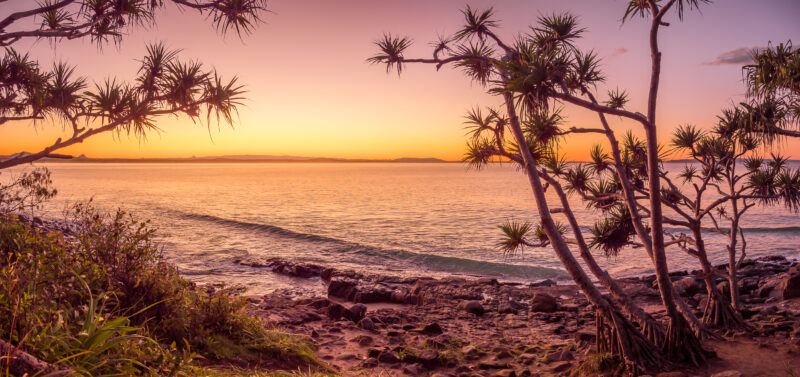
The furthest of the national park breaks, Granite Bay is more exposed to swell and can get bigger and heavier than the others. It’s a wave for confident surfers, offering long rides with more power. The hike in keeps crowds down, but when it’s good, surfers make the pilgrimage.
Sunshine Beach
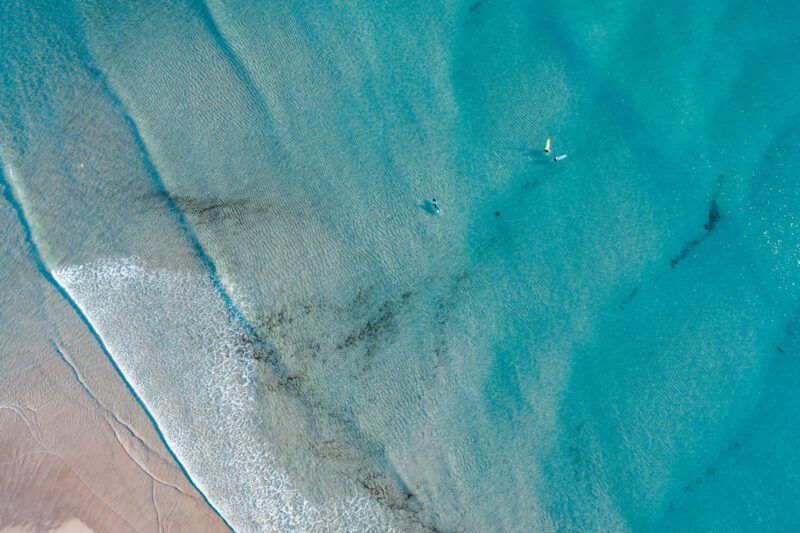
Just around the headland from Noosa’s protected points, Sunshine Beach offers open beach breaks that pick up more swell. It’s punchier and more exposed to wind, but it’s a good option when the points are flat. The vibe is more local and less touristy, with plenty of peaks to choose from.
The Good
- Some of the longest right-hand point breaks in the world
- Wide choice of surf breaks and experiences for all skill levels
- Perfect waves for longboarding and logging culture
- Beautiful natural setting inside a national park
- Warm, sunny weather year-round
- Vibrant surf culture with festivals, shops, and cafés
- Noosa is an ideal seaside escape for surfers and holidaymakers
The Bad
- Extremely crowded during holidays and good swells
- Parking is limited near the national park points
- Swell window can be narrow—long flat spells are common
- Higher cost of food, stays, and lifestyle compared to other surf towns
- Localism can flare when visitors break etiquette at the points

Getting there
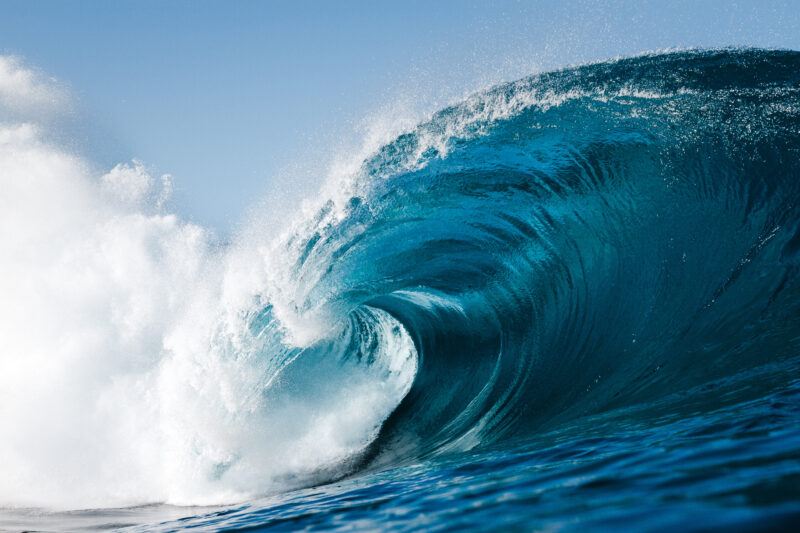
Noosa is a popular destination in Queensland, about a two-hour drive north of Brisbane, with the Bruce Highway connecting the city to the Sunshine Coast. Sunshine Coast Airport at Maroochydore is the closest airport, just 30 minutes south of Noosa, with domestic connections and some international routes. Brisbane International Airport is larger, about 90 minutes away.
After arriving, the Noosa Visitor Information Centre, located in the heart of town, is a helpful resource for planning your trip and discovering the best of this Queensland coastal region.
Once in town, walking or biking is the best way to reach the main points, especially during busy periods when parking near the national park fills up fast. Local buses also connect the town’s beaches. A car is useful if you want to explore Sunshine Beach or other nearby breaks.
Crowds
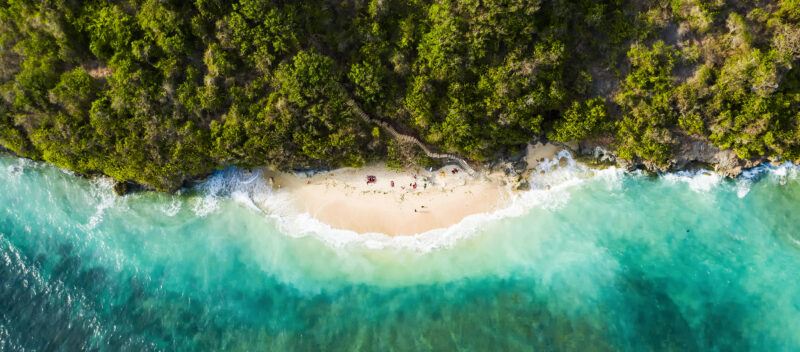
Crowds are Noosa’s biggest challenge. On a good swell, hundreds of surfers can pack into First Point or Tea Tree Bay. Holiday periods and the Noosa Festival of Surfing, which takes place in February, see even more people. Despite the numbers, the vibe is generally stoked, though etiquette is vital. Early mornings and weekdays offer fewer surfers, while hikes into Granite Bay help thin the crowds.
Lineup Lowdown
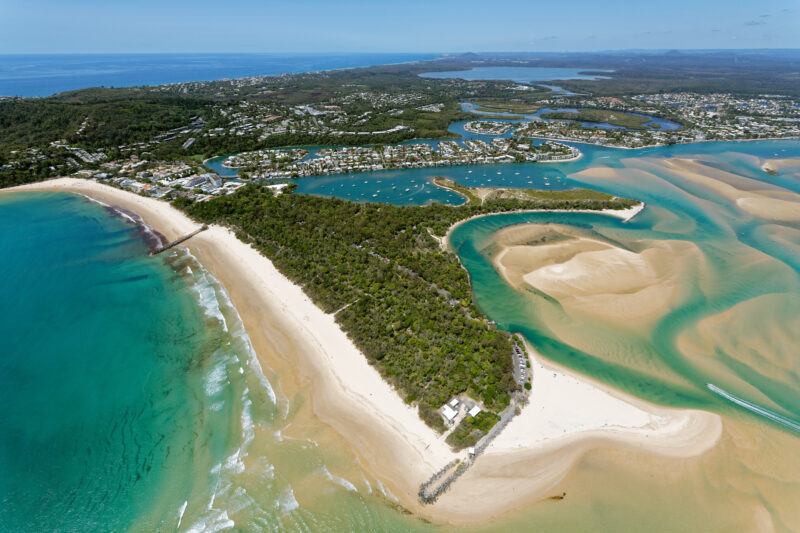
Noosa’s surf culture is built on style and respect. Longboarding traditions run deep, and dropping in or snaking waves is frowned upon. The lineups are diverse—pros, locals, tourists, retirees, and groms all mix together. Patience and etiquette are essential. Locals are protective of their breaks, so visitors should observe before paddling out, respect priority, and avoid paddling straight to the top of the point.
For the best experience, visitors are encouraged to consult a local surf etiquette guide or a travel guide to Noosa for helpful tips and insights.
Surf seasons and when to go
The best time of the year to surf in Noosa
Surf Seasons and When to Go
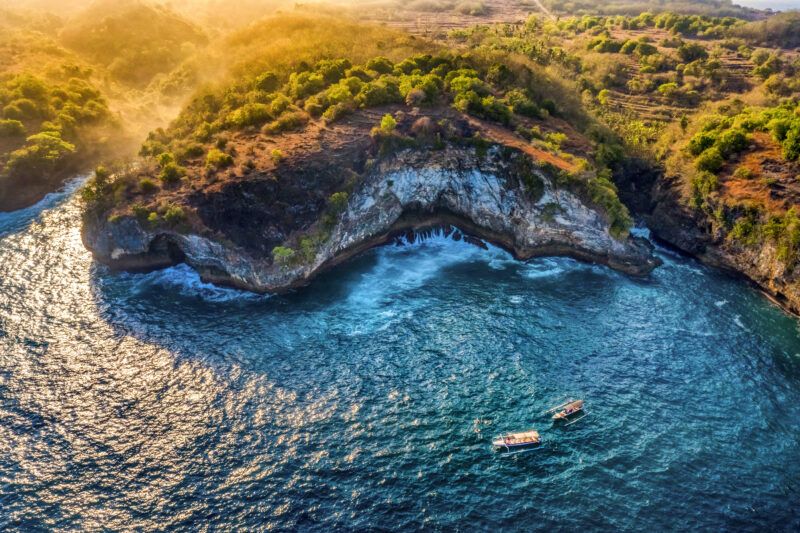
Noosa works best during cyclone season in summer and early autumn, typically from January to April. Cyclones tracking through the Coral Sea send clean, long-period swells that light up the points. Autumn is the most reliable window, with offshore winds grooming the waves. Tourism peaks during these months, attracting more visitors to Noosa and highlighting its reputation as a popular seaside getaway on the Sunshine Coast.
Winter can bring southerly groundswells, though the angle often misses Noosa’s points. Spring and early summer are the least consistent, though the beach breaks at Sunshine Beach can still deliver.
Water Temperatures and Weather
Water temperatures range from 20–26°C. In summer and autumn, boardshorts and bikinis are fine, though a rash vest helps against the sun. During these warmer months, the sparkling waters of Noosa attract swimmers and surfers alike, offering vibrant and inviting ocean conditions. Winter brings cooler mornings and water around 20–22°C, so a spring suit or light steamer is comfortable. Air temperatures range from 20°C in winter to 30°C+ in summer.
Can’t-Miss Surf Spots in Noosa National Park
First Point
Noosa’s most famous wave, First Point is located on Noosa Main Beach, a premier spot for swimming and relaxing by the ocean. Here, visitors can swim in the gentle waves at Noosa Main Beach and nearby coves, with the chance to spot dolphins from the surf breaks or during a swim. First Point is perfect for long rides and classic logging style. On small days, it’s one of the best beginner waves in Australia. On bigger cyclone swells, it offers multiple peeling sections for performance surfing. The beachside setup makes it ideal for spectators, with cafés, boardwalks, and the festival atmosphere during March. The area is surrounded by a variety of cafes and restaurants where you can eat, drink, and enjoy lunch with stunning ocean views. Just a short stroll away, the Noosa River offers additional water activities, scenic views, and more waterfront dining options.
Tea Tree Bay
Beloved by locals and travelling surfers alike, Tea Tree Bay is a long, lined-up right-hander that can run for hundreds of metres on the right swell. The wave suits longboarding but also offers fun sections for carves and the occasional barrel. The walk through the national park to get there adds to the experience. It can get busy, but the length of the rides helps spread surfers out.
Granite Bay
For those willing to hike further, Granite Bay offers more size and power. It’s less crowded due to the effort required, but when cyclone swells hit, it becomes one of the best waves on the Sunshine Coast. Long walls, steeper sections, and more exposure make it better for confident surfers than beginners.
National Park Point
Accessible but slightly less busy than First Point, National Park Point delivers beautiful, peeling rights with more punch. It’s a go-to for shortboarders and performance longboarders who want a bit more variety than the mellow walls of First Point.
Sunshine Beach
A contrast to the points, Sunshine Beach delivers open beach breaks with shifting peaks. It’s punchy, powerful, and often less crowded. When the points are flat, Sunshine Beach usually has something. It’s popular with locals and offers options for all levels, depending on conditions.
Noosa surf travel guide
Find trips that fit a flexible lifestyle
Learning to Surf in Noosa

Noosa is one of the best places in Australia to learn to surf. First Point and the inside sections of the points provide mellow, rolling waves ideal for beginners. You can find a range of surf schools and coaching options in Noosa, offering group lessons (around AU$70–90) and private coaching (AU$120+). Board rentals cost AU$20–30 per day.
The safe environment, gentle waves, and strong surf culture make Noosa a dream place to catch your first wave. Beginners should avoid bigger swells at Tea Tree or Granite Bay, as the power and crowds can be intimidating.
Safety and Etiquette
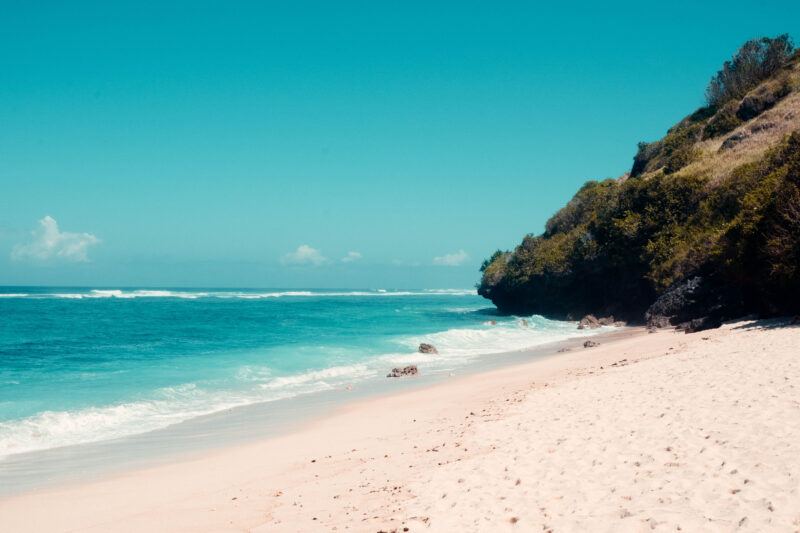
Noosa’s points are safe, but crowded lineups can create collisions if surfers ignore etiquette. Always respect priority, don’t drop in, and paddle wide when returning to the takeoff. Rips are rare at the points but can occur at Sunshine Beach. Sun exposure is a bigger issue—rash vests, sunscreen, and hydration are musts.
Surf and Yoga Retreats

Noosa has a thriving wellness culture, with surf-yoga retreats blending wave riding, mindfulness, and nature immersion. Retreats often include daily surf coaching, yoga classes overlooking the ocean, organic meals, and eco-friendly stays. Prices range from AU$1,000–2,500 per week depending on inclusions. Many retreats are held in boutique guesthouses or eco-lodges close to the points, allowing visitors to immerse themselves in Noosa’s unique blend of surf, wellness, and natural beauty.
Accommodation Options for Surfers near Hastings Street
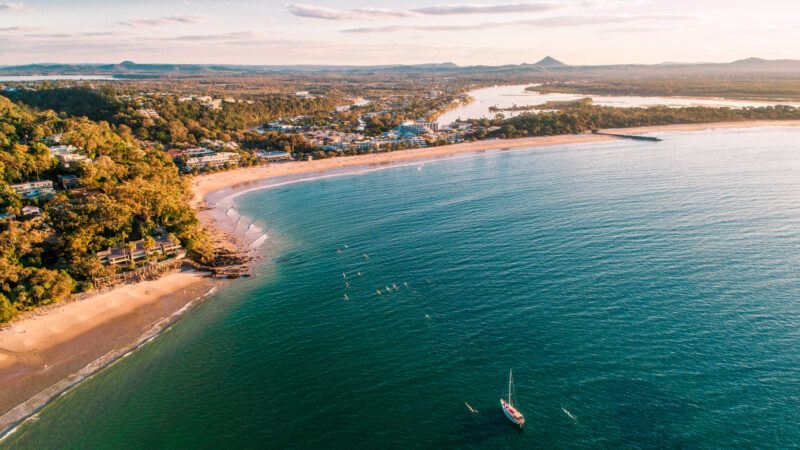
- Noosa Heads: Luxury resorts and boutique stays from AU$250–500+ per night
- Sunshine Beach: Mid-range apartments and villas AU$150–300
- Noosaville: Budget-friendly guesthouses and holiday parks AU$80–150
- Hostels in town: AU$40–70 per night for dorms
- Surf lodges: AU$100–200 with board storage and surf coaching add-ons
- Hinterland: Peaceful countryside retreats and charming B&Bs for those seeking a rural stay, surrounded by nature and local markets
Comparison to Other Surf Destinations

Noosa is often compared to Malibu in California or Waikiki in Hawaii. Like Malibu, it’s a longboarding paradise with stylish rides and a deep surf culture. Unlike Hawaii, however, the vibe is slower, quieter, and more eco-conscious. Compared to Gold Coast points like Snapper Rocks, Noosa is mellower but also less consistent. For travellers chasing iconic waves, culture, and lifestyle, Noosa sits among Australia’s best surf destinations.
Expenses

- Accommodation: AU$80–500+ depending on style
- Food: AU$15–25 for casual meals, AU$40–70 for dining out
- Transport: Car hire from AU$60 per day, scooters AU$40 per day
- Surf Costs: Board rentals AU$20–30/day, lessons AU$70–120/session
- Retreats: AU$1,000–2,500 per week
Visitors can choose how to spend their budget in Noosa, whether prioritizing accommodation, food, or activities based on their preferences.
Noosa is more expensive than many surf towns in Australia, reflecting its status as a luxury holiday spot.
Cultural Notes

Noosa blends traditional Aussie beach culture with an eco-conscious, upscale lifestyle. Locals are passionate about preserving the national park and biosphere, so respect for the environment is expected. The surf community is stylish, friendly, and proud of its heritage. Post-surf café culture is strong, with acai bowls, organic coffee, and boutique shopping all part of the experience.
Fashion boutiques along Hastings Street highlight Noosa’s reputation for coastal style, offering visitors a chance to shop for the latest trends and unique pieces. You can shop for one-of-a-kind items in local stores and markets, where the vibrant retail scene is an essential part of exploring Noosa’s culture. Markets like Eumundi are also renowned for showcasing local produce, connecting visitors to the region’s fresh food treasures and agricultural heritage.
Cell Coverage and Wi-Fi
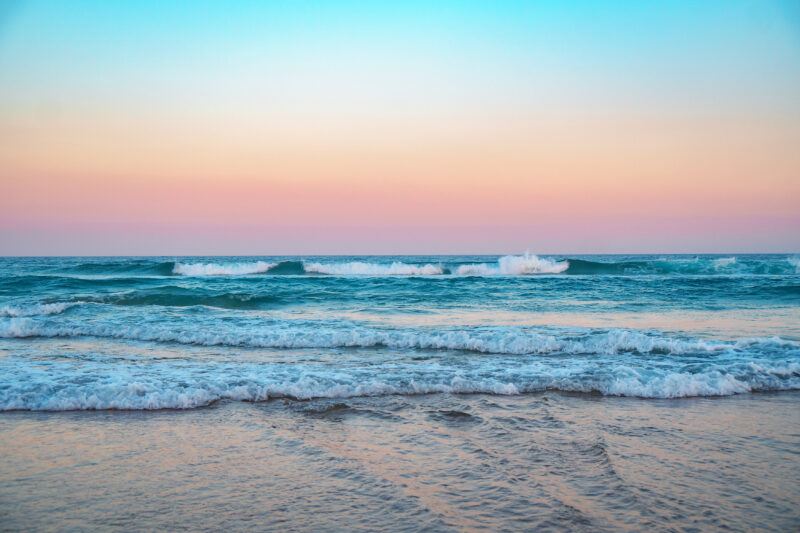
Coverage is excellent across Noosa and the surrounding Sunshine Coast. Wi-Fi is fast and reliable in most hotels, cafés, and public spaces, making it an easy spot for digital nomads and travellers.
Final Thoughts

Noosa is a dream surf destination where long, peeling rights meet stunning natural beauty and vibrant culture. From the mellow walls of First Point to the power of Granite Bay, the points deliver rides that every surfer dreams of. The combination of warm water, national park scenery, and world-class surf festivals make it a must-visit for surfers of all levels.
There are plenty of things to do in Noosa, from surfing and exploring the national park to shopping, visiting local markets, and enjoying the vibrant dining scene. After a day in the surf, Noosa is the perfect place to relax and soak in the laidback atmosphere surrounded by breathtaking coastal views.
Crowds and costs are real challenges, but with patience and planning, Noosa rewards you with some of the longest rides of your life. It’s not just a surf trip—it’s a lifestyle immersion in one of the world’s most beautiful coastal towns.


